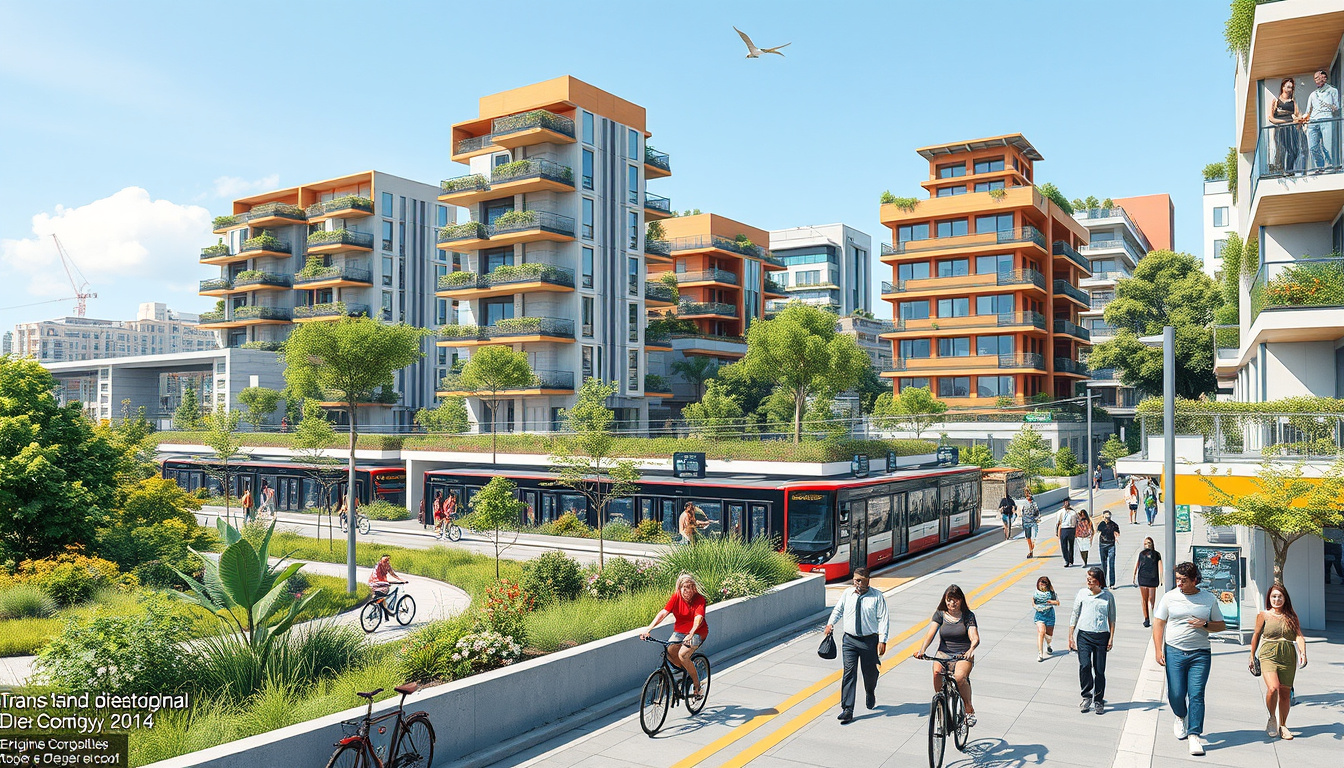In recent years, the concept of transit-oriented developments has gained significant traction among urban planners, policymakers, and sustainability advocates alike. These developmental strategies seek to create walkable communities centered around high-quality public transit systems, promoting not just convenience, but a more sustainable lifestyle. In this article, we will explore the essence of transit-oriented developments, delve into their compelling benefits for sustainable living, and examine the challenges and opportunities they present in an ever-evolving urban landscape. Join us as we unlock the future of urban living with insightful perspectives on how transit-oriented developments can redefine our cities.

Key Takeaways
- Transit-oriented developments promote sustainable urban living by integrating transportation options with residential spaces.
- These developments reduce reliance on cars, leading to decreased traffic congestion and lower carbon emissions.
- Transit-oriented developments can boost local economies by increasing accessibility to businesses and services.
- Implementing these developments faces challenges such as zoning regulations and community resistance, but offers significant long-term benefits.
- Successful transit-oriented developments create vibrant, walkable communities that enhance residents’ quality of life.
Understanding Transit-Oriented Developments: A Comprehensive Overview
Transit-oriented developments (TOD) have emerged as a pivotal strategy in urban planning, aimed at creating vibrant, sustainable communities centered around public transportation hubs. These developments prioritize accessibility to various transit options, such as subways, buses, and light rail, thereby reducing reliance on personal vehicles while promoting walkable neighborhoods. At the core of transit-oriented developments is the integration of residential, commercial, and recreational spaces within close proximity to transit stations, which not only enhances the quality of life for residents but also stimulates local economies. By embracing TOD principles, cities can effectively address urban sprawl, lower carbon footprints, and foster a sense of community, making them an increasingly popular choice for modern city planners. Understanding the nuances of transit-oriented developments is crucial for stakeholders aiming to create more efficient, sustainable urban spaces that cater to the needs of a growing population.
Key Benefits of Transit-Oriented Developments for Sustainable Living
Transit-oriented developments (TOD) have emerged as a game-changer in the pursuit of sustainable living, offering numerous benefits that align with eco-friendly practices and urban planning. One of the primary advantages of transit-oriented developments is their ability to reduce dependency on automobiles, thereby curbing greenhouse gas emissions and minimizing traffic congestion. By integrating residential, commercial, and recreational spaces within close proximity to public transportation hubs, TOD encourages walking, biking, and the use of transit systems, fostering healthier lifestyles for residents. Furthermore, these developments promote efficient land use, as they concentrate growth in urban areas, which can help preserve rural landscapes and reduce urban sprawl. This holistic approach not only enhances the quality of life for the community by providing better access to amenities and services but also leads to increased economic activity as businesses thrive in well-connected neighborhoods. Ultimately, the implementation of transit-oriented developments supports ambitious sustainability goals while creating vibrant, inclusive communities.
‘The future belongs to those who believe in the beauty of their dreams.’ — Eleanor Roosevelt

Challenges and Opportunities in Implementing Transit-Oriented Developments
Transit-oriented developments (TODs) are gaining momentum as urban areas strive for sustainable growth and improved accessibility. However, the implementation of TODs presents a mixed bag of challenges and opportunities. One major challenge is the resistance from local communities, often stemming from concerns about increased density and disruption of existing neighborhoods. Additionally, navigating the regulatory landscape and securing funding for infrastructure improvements can be daunting. On the flip side, TODs offer significant opportunities for cities looking to revitalize underutilized land and promote public transport usage, which can lead to reduced traffic congestion and lower carbon emissions. By creatively designing spaces that integrate residential, commercial, and transit hubs, cities can attract more people, enhance economic vitality, and create vibrant communities that foster social interaction. To successfully overcome the challenges of implementing transit-oriented developments, collaboration between city planners, government officials, and the community will be essential in realizing the full potential of these innovative urban solutions.
Moose Realty
Mustafa “Moose” Aslamzada | Real Estate Agent
Royal LePage Signature Realty
[color=rgb(71, 71, 71)]30 Eglinton Ave W Suite 201, Mississauga, ON L5R 3E7[/color]
📞 647-988-7325 | ✉️ moose.a@royallepage.ca
🌐 www.MooseRealty.ca
Connect with Us
Facebook | Twitter | LinkedIn | Instagram
